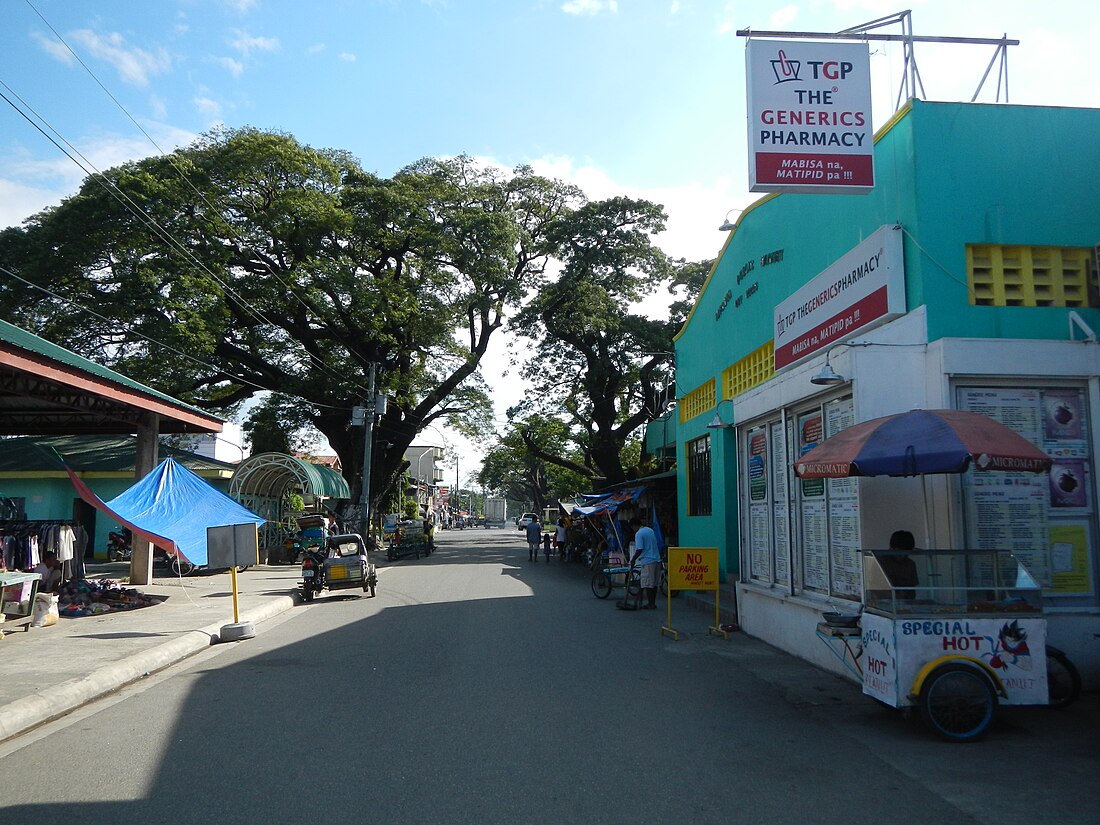Top Qs
Timeline
Chat
Perspective
Infanta, Pangasinan
Municipality in Pangasinan, Philippines From Wikipedia, the free encyclopedia
Remove ads
Infanta, officially the Municipality of Infanta (Pangasinan: Baley na Infanta; Ilocano: Ili ti Infanta; Sambal: Babali nin Infanta; Filipino: Bayan ng Infanta), is a municipality in the province of Pangasinan, Philippines. According to the 2020 census, it has a population of 26,242 people.[5]
Remove ads
Churches
Major Religion - The Jesus Church (TJC) - Infanta
Minor Religion - Catholic Churches
Etymology
Infanta got its name from a word that means "young," as it was an "offspring" created out of Santa Cruz, Zambales.[6]
History
Originally a barrio, Infanta was created out of Santa Cruz, Zambales on October 4, 1876 to become an independent municipality by virtue of a Superior Decree by the Spanish colonial government.[6] Infanta was gradually populated by Ilocano settlers from Paoay, Ilocos Norte over the years.
On November 20, 1903, Infanta was separated from Zambales and was annexed to Pangasinan by virtue of Act No. 1004.[7] Through Presidential Proclamation 693, October 4, 2024 was declared a special non-working day in celebration of its 148th founding anniversary.[8]
Geography
Infanta is situated 88.62 kilometres (55.07 mi) from the provincial capital Lingayen, and 297.43 kilometres (184.81 mi) from the country's capital city of Manila.
Barangays
Infanta is politically subdivided into 13 barangays. Each barangay consists of puroks and some have sitios.
- Bamban
- Batang
- Bayambang
- Cato
- Doliman
- Patima
- Maya
- Nangalisan
- Nayom
- Pita
- Poblacion
- Potol
- Babuyan
Climate
Remove ads
Demographics
Languages
The people of Infanta are generally speak Pangasinan, Sambal, and Ilocano.
Remove ads
Economy
Poverty incidence of Infanta
10
20
30
40
50
2000
42.67 2003
30.11 2006
39.00 2009
23.99 2012
9.50 2015
14.18 2018
12.78 2021
21.03 Source: Philippine Statistics Authority[15][16][17][18][19][20][21][22] |
Government
Local government
Infanta is part of the first congressional district of the province of Pangasinan. It is governed by a mayor, designated as its local chief executive, and by a municipal council as its legislative body in accordance with the Local Government Code. The mayor, vice mayor, and the councilors are elected directly by the people through an election which is being held every three years.
Elected officials
Remove ads
Education
The Infanta Schools District Office governs all educational institutions within the municipality. It oversees the management and operations of all private and public elementary and high schools.[24]
Primary and elementary schools
- Atel-Batang Elementary School
- Babuyan Elementary School
- Bamban Norte Elementary School
- Bamban Sur Elementary School
- Bayambang Elementary School
- Cato Elementary School
- Doliman Elementary School
- Maringindingin Elementary School
- Maya Elementary School
- Nangalisan San Juan Elementary School
- Nayom Elementary School
- Patima Elementary School
- Potol Elementary School
- St. John's Institute
- St. John Learning Center
Secondary schools
- Bayambang National High School
- Cato National High School
- Infanta Integrated School
- Pita Integrated School
Remove ads
References
External links
Wikiwand - on
Seamless Wikipedia browsing. On steroids.
Remove ads







